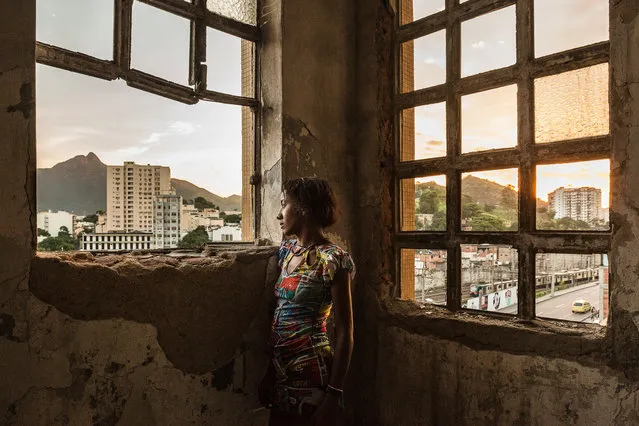
Planned improvements to Rio’s favelas have meant increases in rent, forcing the poorest families into squatting in unoccupied buildings. Photographer Tariq Zaidi visits the Mangueira community favela, less than 1km from the showpiece Maracanã stadium, to see what life is like for the women living there. Here: A woman stands at the windows of the abandoned ministry of finance building in the Mangueira favela in Rio de Janeiro’s North Zone. (Photo by Tariq Zaidi/The Guardian)
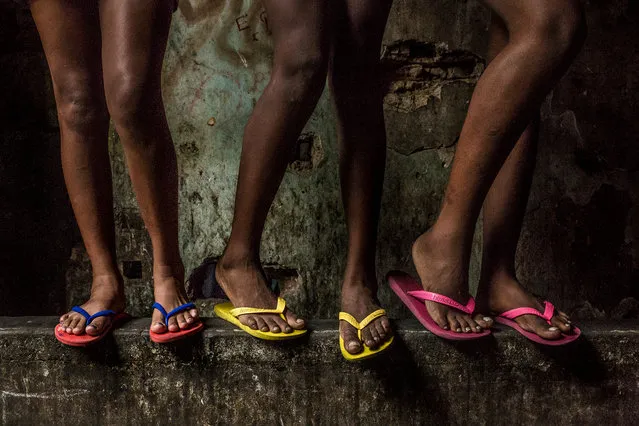
The Brazilian authorities promised billions to improve life in Rio’s favelas as part of the city’s World Cup and Olympic bids. But the schemes and the promise to remodel the slums have had an unintended consequence: hikes in the cost of renting. (Photo by Tariq Zaidi/The Guardian)
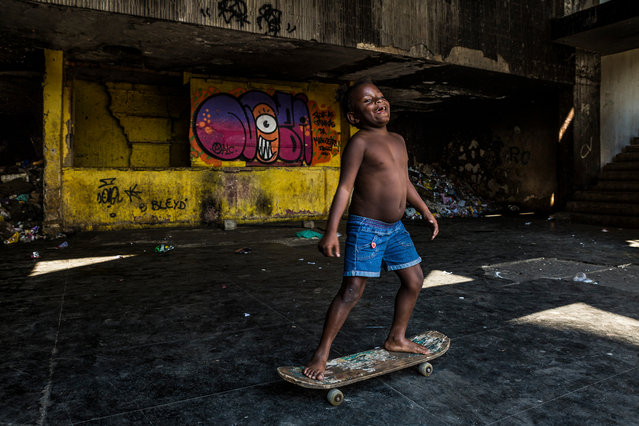
A child rides her skateboard in the Brazilian Institute of Geography and Statistics (IBGE) building in Mangueira. (Photo by Tariq Zaidi/The Guardian)
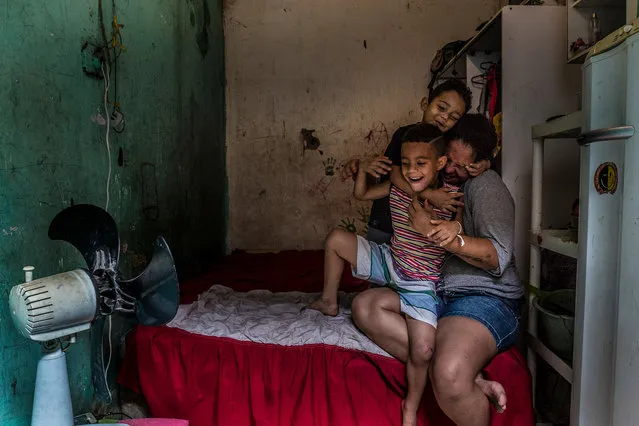
Pamela lives in a one-bedroom apartment in the IBGE building. Women, who are often the chief breadwinners, also look after the children and elderly people in their communities. (Photo by Tariq Zaidi/The Guardian)
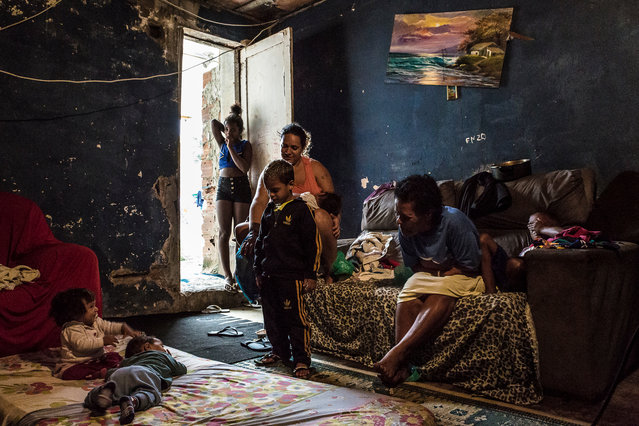
Martha, second from the right, plays with her grandchildren in the 14-storey IBGE building. It is home to about 100 families, after being abandoned in 2000. (Photo by Tariq Zaidi/The Guardian)
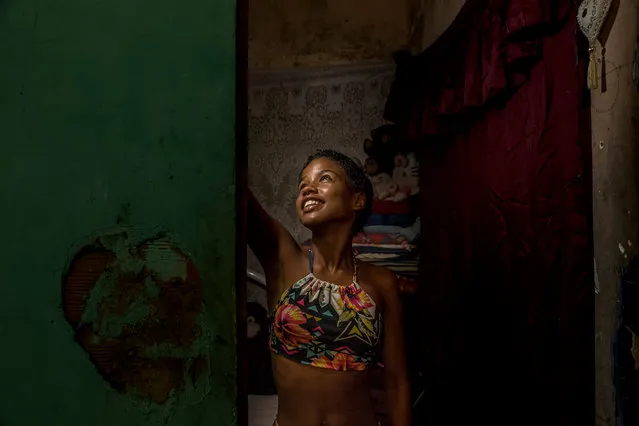
Victoria, 12, at her home in Mangueira. (Photo by Tariq Zaidi/The Guardian)
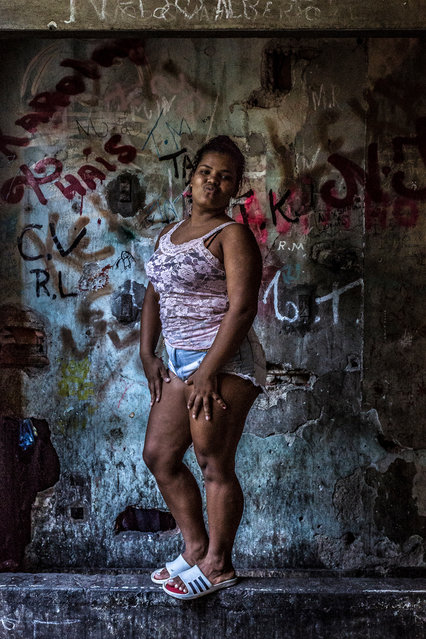
A resident stands in front of an elevator shaft covered in graffiti at the building. Like other favelas, Mangueira lacks proper sanitation, education, security and healthcare services. (Photo by Tariq Zaidi/The Guardian)
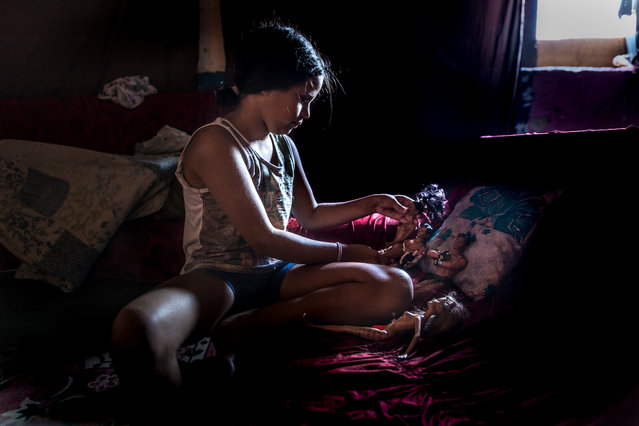
A girl plays with her dolls. In 2011 there were plans to turn the IBGE building into a cultural centre, but so far no work has been done. (Photo by Tariq Zaidi/The Guardian)
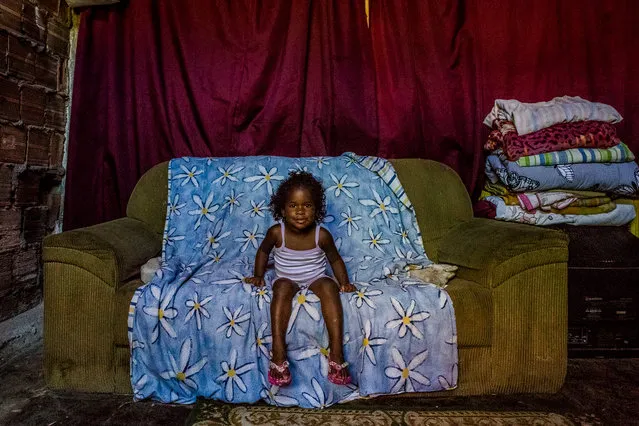
Rio’s housing department put together a package of $45m (£35m) for projects in the area. (Photo by Tariq Zaidi/The Guardian)
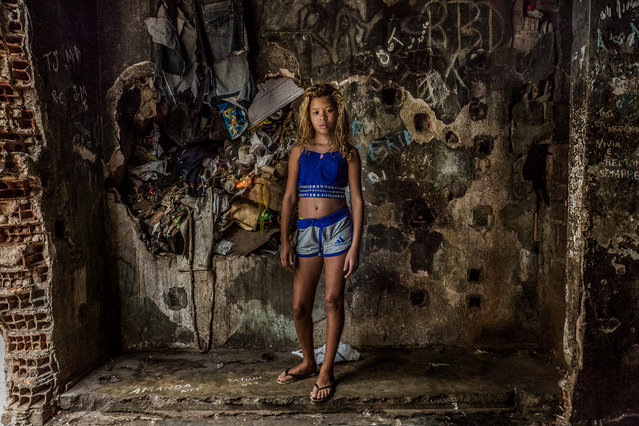
Roberta, 11, stands in front of one of the old elevator shafts, which are now filled with rubbish. (Photo by Tariq Zaidi/The Guardian)
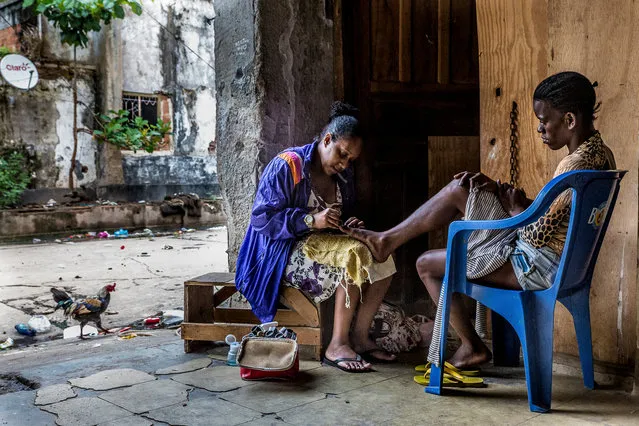
Ceia gives Alexandra a pedicure in the grounds of the building. (Photo by Tariq Zaidi/The Guardian)
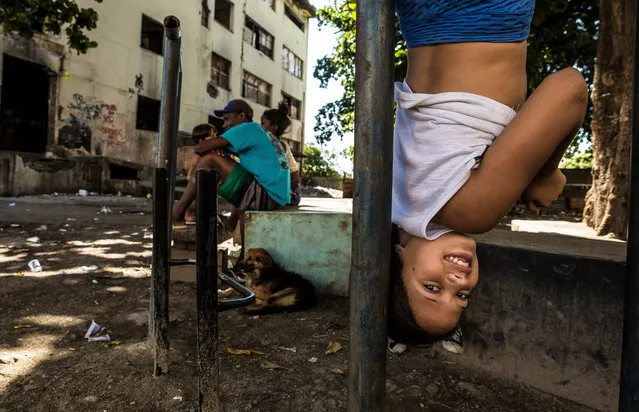
A resident plays outside. (Photo by Tariq Zaidi/The Guardian)
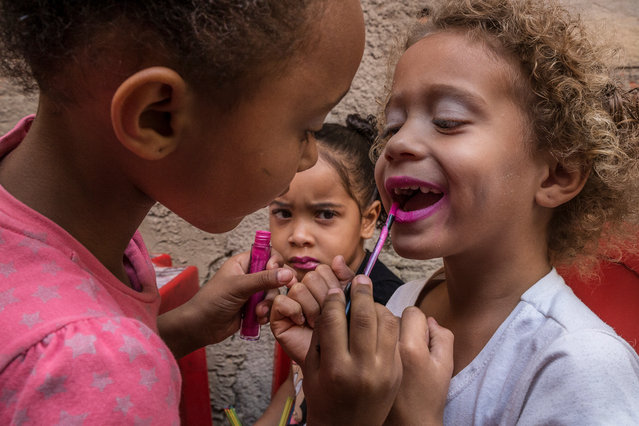
Girls have fun with lipstick and makeup. (Photo by Tariq Zaidi/The Guardian)
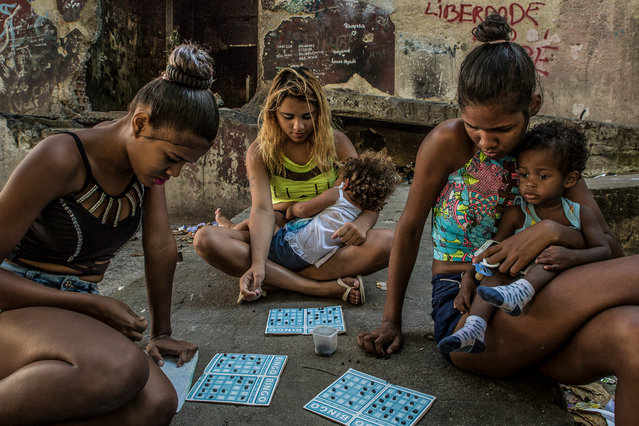
Mothers aged between 16 and 18 play bingo using black beans as chips. (Photo by Tariq Zaidi/The Guardian)
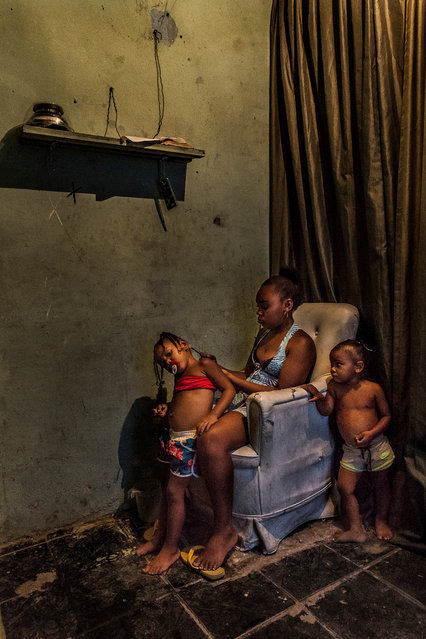
Inside one of the basic favela homes a mother braids her daughter’s hair. Despite being marginalised and blamed for many of Rio’s social problems, the favela’s residents have created a society based on cooperation to survive in the crowded city. (Photo by Tariq Zaidi/The Guardian)

Hopes for change in Rio have been dampened by news that the new mayor is projecting a budget shortfall of almost $1bn this year, and the state budget is expected to fall short by more than $6bn. The state also owes $10bn in loans guaranteed by the federal government. (Photo by Tariq Zaidi/The Guardian)
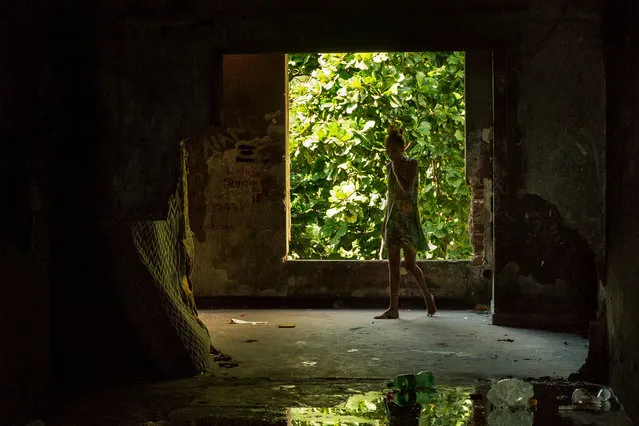
A resident in one of the building’s corridors. People living here share bread, blankets, water, food and medicine. They have shown incredible resilience in the face of harsh conditions. (Photo by Tariq Zaidi/The Guardian)
29 Jun 2017 08:08:00,
post received
0 comments
